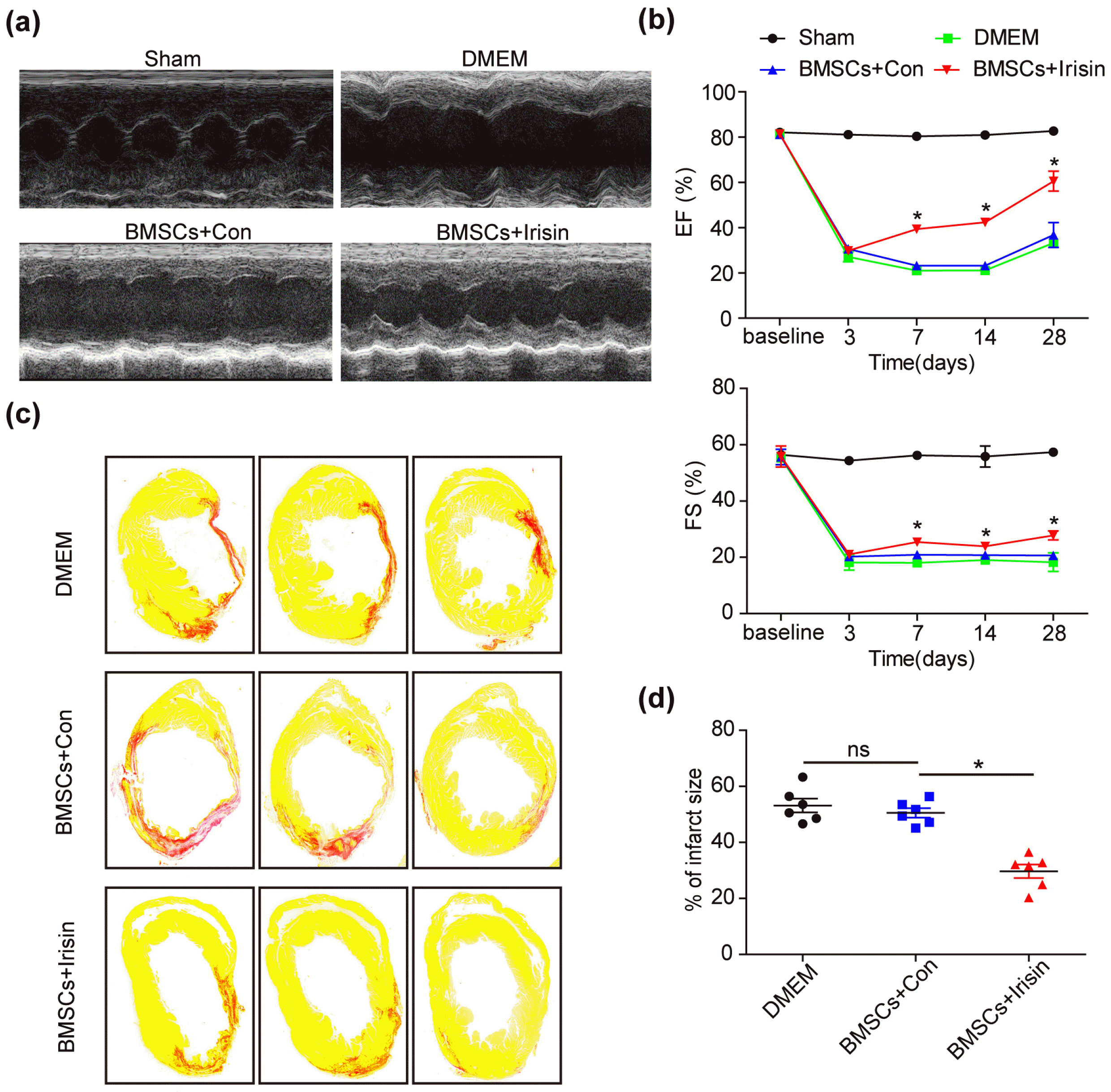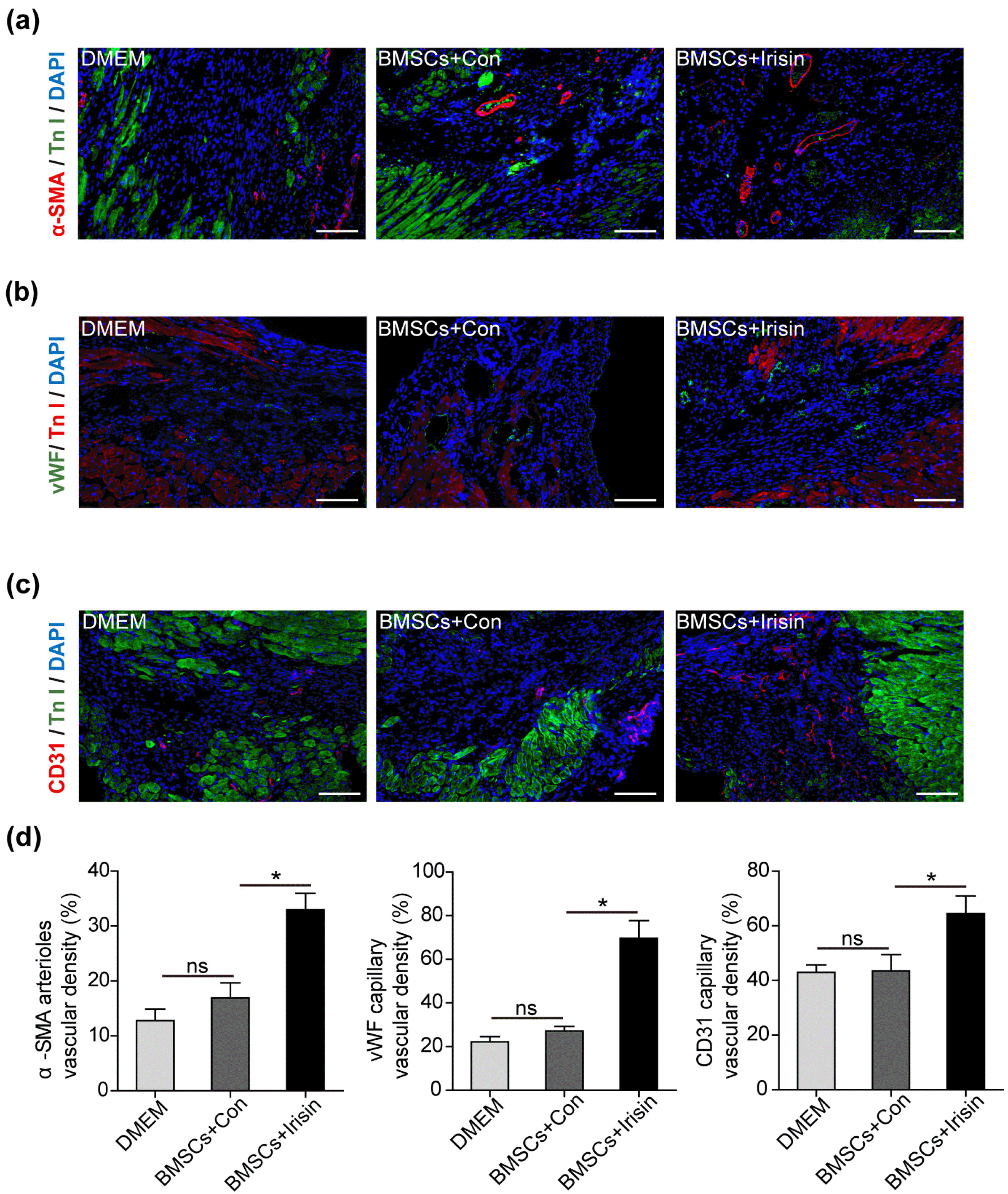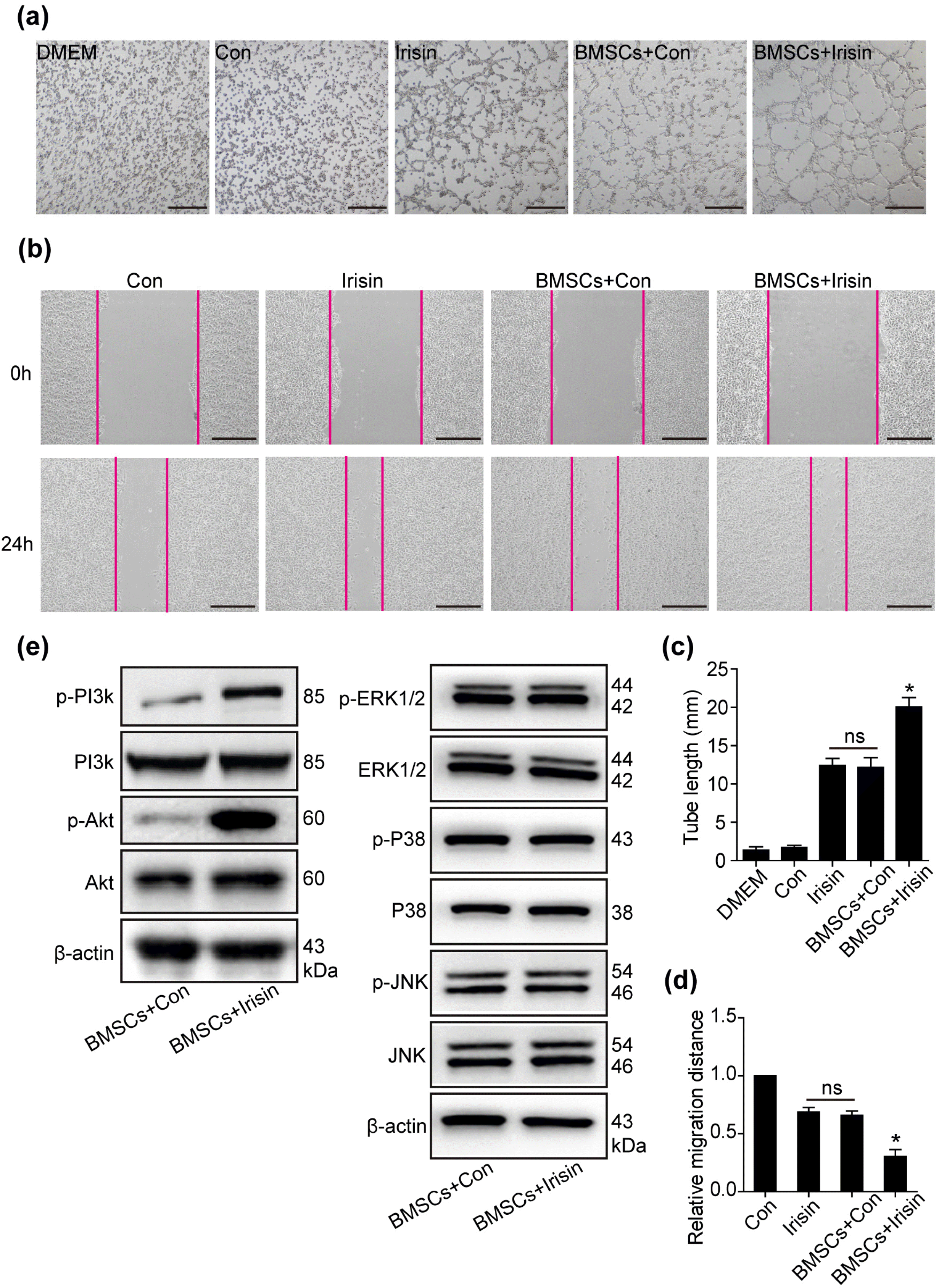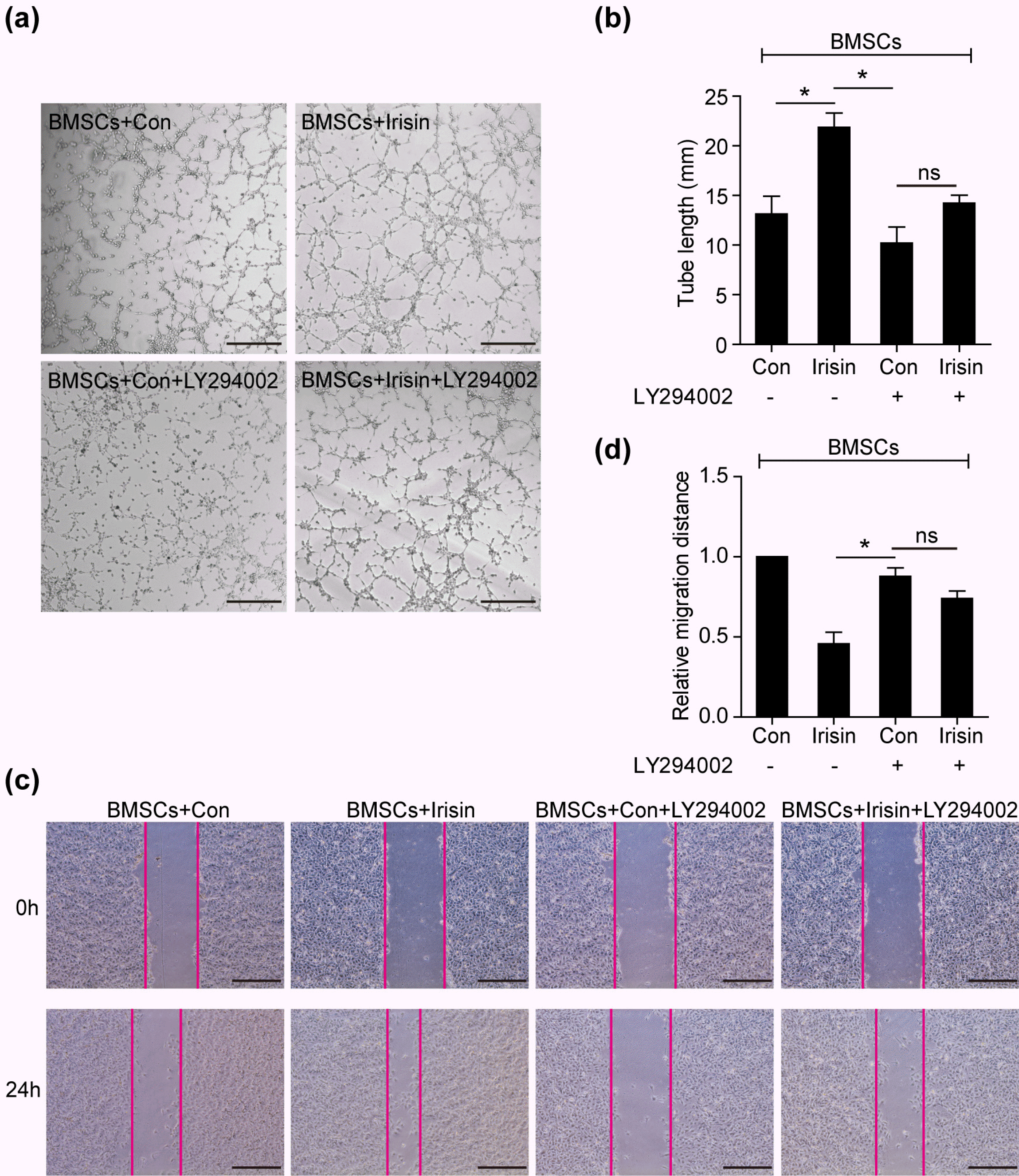1. Bubb KJ, Aubdool AA, Moyes AJ, Lewis S, Drayton JP, Tang O, Mehta V, Zachary IC, Abraham DJ, Tsui J, Hobbs AJ. 2019; Endothelial C-type natriuretic peptide is a critical regulator of angiogenesis and vascular remodeling. Circulation. 139:1612–1628. DOI:
10.1161/CIRCULATIONAHA.118.036344. PMID:
30586761. PMCID:
PMC6438487.

2. Oka T, Akazawa H, Naito AT, Komuro I. 2014; Angiogenesis and cardiac hypertrophy: maintenance of cardiac function and causative roles in heart failure. Circ Res. 114:565–571. DOI:
10.1161/CIRCRESAHA.114.300507. PMID:
24481846.
3. Boström P, Wu J, Jedrychowski MP, Korde A, Ye L, Lo JC, Rasbach KA, Boström EA, Choi JH, Long JZ, Kajimura S, Zingaretti MC, Vind BF, Tu H, Cinti S, Højlund K, Gygi SP, Spiegelman BM. 2012; A PGC1-α-dependent myokine that drives brown-fat-like development of white fat and thermogenesis. Nature. 481:463–468. DOI:
10.1038/nature10777. PMID:
22237023. PMCID:
PMC3522098.

4. Tachibana A, Santoso MR, Mahmoudi M, Shukla P, Wang L, Bennett M, Goldstone AB, Wang M, Fukushi M, Ebert AD, Woo YJ, Rulifson E, Yang PC. 2017; Paracrine effects of the pluripotent stem cell-derived cardiac myocytes salvage the injured myocardium. Circ Res. 121:e22–e36. DOI:
10.1161/CIRCRESAHA.117.310803. PMID:
28743804. PMCID:
PMC5783162.

5. Wang H, Zhao YT, Zhang S, Dubielecka PM, Du J, Yano N, Chin YE, Zhuang S, Qin G, Zhao TC. 2017; Irisin plays a pivotal role to protect the heart against ischemia and reperfusion injury. J Cell Physiol. 232:3775–3785. DOI:
10.1002/jcp.25857. PMID:
28181692. PMCID:
PMC5550372.

6. Zhang X, Hu C, Kong CY, Song P, Wu HM, Xu SC, Yuan YP, Deng W, Ma ZG, Tang QZ. 2020; FNDC5 alleviates oxidative stress and cardiomyocyte apoptosis in doxorubicin-induced cardiotoxicity via activating AKT. Cell Death Differ. 27:540–555. DOI:
10.1038/s41418-019-0372-z. PMID:
31209361. PMCID:
PMC7206111.

7. Yu Q, Kou W, Xu X, Zhou S, Luan P, Xu X, Li H, Zhuang J, Wang J, Zhao Y, Xu Y, Peng W. 2019; FNDC5/Irisin inhibits pathological cardiac hypertrophy. Clin Sci (Lond). 133:611–627. DOI:
10.1042/CS20190016. PMID:
30782608.

8. Li RL, Wu SS, Wu Y, Wang XX, Chen HY, Xin JJ, Li H, Lan J, Xue KY, Li X, Zhuo CL, Cai YY, He JH, Zhang HY, Tang CS, Wang W, Jiang W. 2018; Irisin alleviates pressure overload-induced cardiac hypertrophy by inducing protective autophagy via mTOR-independent activation of the AMPK-ULK1 pathway. J Mol Cell Cardiol. 121:242–255. DOI:
10.1016/j.yjmcc.2018.07.250. PMID:
30053525.

9. Wu F, Song H, Zhang Y, Zhang Y, Mu Q, Jiang M, Wang F, Zhang W, Li L, Li H, Wang Y, Zhang M, Li S, Yang L, Meng Y, Tang D. 2015; Irisin induces angiogenesis in human umbilical vein endothelial cells in vitro and in zebrafish embryos in vivo via activation of the ERK signaling pathway. PLoS One. 10:e0134662. DOI:
10.1371/journal.pone.0134662. PMID:
26241478. PMCID:
PMC4524626.

10. Liao Q, Qu S, Tang LX, Li LP, He DF, Zeng CY, Wang WE. 2019; Irisin exerts a therapeutic effect against myocardial infarction via promoting angiogenesis. Acta Pharmacol Sin. 40:1314–1321. DOI:
10.1038/s41401-019-0230-z. PMID:
31061533. PMCID:
PMC6786355.

11. Yang F, Wu R, Jiang Z, Chen J, Nan J, Su S, Zhang N, Wang C, Zhao J, Ni C, Wang Y, Hu W, Zeng Z, Zhu K, Liu X, Hu X, Zhu W, Yu H, Huang J, Wang J. 2018; Leptin increases mitochondrial OPA1 via GSK3-mediated OMA1 ubiquitination to enhance therapeutic effects of mesenchymal stem cell transplantation. Cell Death Dis. 9:556. DOI:
10.1038/s41419-018-0579-9. PMID:
29748581. PMCID:
PMC5945599.

12. Zhang N, Ye F, Zhu W, Hu D, Xiao C, Nan J, Su S, Wang Y, Liu M, Gao K, Hu X, Chen J, Yu H, Xie X, Wang J. 2016; Cardiac ankyrin repeat protein attenuates cardiomyocyte apoptosis by upregulation of Bcl-2 expression. Biochim Biophys Acta. 1863:3040–3049. DOI:
10.1016/j.bbamcr.2016.09.024. PMID:
27713078.

13. Golpanian S, Wolf A, Hatzistergos KE, Hare JM. 2016; Rebuilding the damaged heart: mesenchymal stem cells, cell-based therapy, and engineered heart tissue. Physiol Rev. 96:1127–1168. DOI:
10.1152/physrev.00019.2015. PMID:
27335447. PMCID:
PMC6345247.

14. Ranganath SH, Levy O, Inamdar MS, Karp JM. 2012; Harnessing the mesenchymal stem cell secretome for the treatment of cardiovascular disease. Cell Stem Cell. 10:244–258. DOI:
10.1016/j.stem.2012.02.005. PMID:
22385653. PMCID:
PMC3294273.

15. Hsiao ST, Asgari A, Lokmic Z, Sinclair R, Dusting GJ, Lim SY, Dilley RJ. 2012; Comparative analysis of paracrine factor expression in human adult mesenchymal stem cells derived from bone marrow, adipose, and dermal tissue. Stem Cells Dev. 21:2189–2203. DOI:
10.1089/scd.2011.0674. PMID:
22188562. PMCID:
PMC3411362.

16. Deng J, Zhang N, Wang Y, Yang C, Wang Y, Xin C, Zhao J, Jin Z, Cao F, Zhang Z. 2020; FNDC5/irisin improves the therapeutic efficacy of bone marrow-derived mesenchymal stem cells for myocardial infarction. Stem Cell Res Ther. 11:228. DOI:
10.1186/s13287-020-01746-z. PMID:
32522253. PMCID:
PMC7288492.

17. Mahajan UB, Chandrayan G, Patil CR, Arya DS, Suchal K, Agrawal Y, Ojha S, Goyal SN. 2018; Eplerenone attenuates myocardial infarction in diabetic rats via modulation of the PI3K-Akt pathway and phosphorylation of GSK-3β. Am J Transl Res. 10:2810–2821. PMID:
30323868. PMCID:
PMC6176230.
18. Wollert KC, Drexler H. 2010; Cell therapy for the treatment of coronary heart disease: a critical appraisal. Nat Rev Cardiol. 7:204–215. DOI:
10.1038/nrcardio.2010.1. PMID:
20177405.

20. Park J, Lee JH, Yoon BS, Jun EK, Lee G, Kim IY, You S. 2018; Additive effect of bFGF and selenium on expansion and paracrine action of human amniotic fluid-derived mesenchymal stem cells. Stem Cell Res Ther. 9:293. DOI:
10.1186/s13287-018-1058-z. PMID:
30409167. PMCID:
PMC6225588.

21. Korta P, Pocheć E, Mazur-Biały A. 2019; Irisin as a multifunctional protein: implications for health and certain diseases. Medicina (Kaunas). 55:485. DOI:
10.3390/medicina55080485. PMID:
31443222. PMCID:
PMC6722973.

22. Lourenco MV, Frozza RL, de Freitas GB, Zhang H, Kincheski GC, Ribeiro FC, Gonçalves RA, Clarke JR, Beckman D, Staniszewski A, Berman H, Guerra LA, Forny-Germano L, Meier S, Wilcock DM, de Souza JM, Alves-Leon S, Prado VF, Prado MAM, Abisambra JF, Tovar-Moll F, Mattos P, Arancio O, Ferreira ST, De Felice FG. 2019; Exercise-linked FNDC5/irisin rescues synaptic plasticity and memory defects in Alzheimer's models. Nat Med. 25:165–175. DOI:
10.1038/s41591-018-0275-4. PMID:
30617325. PMCID:
PMC6327967.

23. Zhou X, Xu M, Bryant JL, Ma J, Xu X. 2019; Exercise-induced myokine FNDC5/irisin functions in cardiovascular protection and intracerebral retrieval of synaptic plasticity. Cell Biosci. 9:32. DOI:
10.1186/s13578-019-0294-y. PMID:
30984367. PMCID:
PMC6446275.

24. Tan Y, Ouyang H, Xiao X, Zhong J, Dong M. 2019; Irisin ameliorates septic cardiomyopathy via inhibiting DRP1-related mitochondrial fission and normalizing the JNK-LATS2 signaling pathway. Cell Stress Chaperones. 24:595–608. DOI:
10.1007/s12192-019-00992-2. PMID:
30993599. PMCID:
PMC6527615.

25. Colaianni G, Mongelli T, Colucci S, Cinti S, Grano M. 2016; Crosstalk between muscle and bone via the muscle-myokine Irisin. Curr Osteoporos Rep. 14:132–137. DOI:
10.1007/s11914-016-0313-4. PMID:
27299471.

26. Grygiel-Górniak B, Puszczewicz M. 2017; A review on irisin, a new protagonist that mediates muscle-adipose-bone-neuron connectivity. Eur Rev Med Pharmacol Sci. 21:4687–4693. PMID:
29131244.
27. Lee CW, Hsiao WT, Lee OK. 2017; Mesenchymal stromal cell-based therapies reduce obesity and metabolic syndromes induced by a high-fat diet. Transl Res. 182:61–74.e8. DOI:
10.1016/j.trsl.2016.11.003. PMID:
27908750.

28. Yao D, Liu NN, Mo BW. 2020; Assessment of proliferation, migration and differentiation potentials of bone marrow mesenchymal stem cells labeling with silica-coated and amine-modified superparamagnetic iron oxide nanoparticles. Cytotechnology. 72:513–525. DOI:
10.1007/s10616-020-00397-5. PMID:
32394163. PMCID:
PMC7450019.

30. Rabiee F, Lachinani L, Ghaedi S, Nasr-Esfahani MH, Megraw TL, Ghaedi K. 2020; New insights into the cellular activities of Fndc5/Irisin and its signaling pathways. Cell Biosci. 10:51. DOI:
10.1186/s13578-020-00413-3. PMID:
32257109. PMCID:
PMC7106581.

31. Ersahin T, Tuncbag N, Cetin-Atalay R. 2015; The PI3K/AKT/mTOR interactive pathway. Mol Biosyst. 11:1946–1954. DOI:
10.1039/C5MB00101C. PMID:
25924008.

32. Lanza Cariccio V, Scionti D, Raffa A, Iori R, Pollastro F, Diomede F, Bramanti P, Trubiani O, Mazzon E. 2018; Treatment of periodontal ligament stem cells with MOR and CBD promotes cell survival and neuronal differentiation via the PI3K/Akt/mTOR pathway. Int J Mol Sci. 19:2341. DOI:
10.3390/ijms19082341. PMID:
30096889. PMCID:
PMC6121255.

33. Li JY, Ren KK, Zhang WJ, Xiao L, Wu HY, Liu QY, Ding T, Zhang XC, Nie WJ, Ke Y, Deng KY, Liu QW, Xin HB. 2019; Human amniotic mesenchymal stem cells and their paracrine factors promote wound healing by inhibiting heat stress-induced skin cell apoptosis and enhancing their proliferation through activating PI3K/AKT signaling pathway. Stem Cell Res Ther. 10:247. DOI:
10.1186/s13287-019-1366-y. PMID:
31399039. PMCID:
PMC6688220.

34. Deng J, Bai X, Feng X, Ni J, Beretov J, Graham P, Li Y. 2019; Inhibition of PI3K/Akt/mTOR signaling pathway alleviates ovarian cancer chemoresistance through reversing epithelial-mesenchymal transition and decreasing cancer stem cell marker expression. BMC Cancer. 19:618. DOI:
10.1186/s12885-019-5824-9. PMID:
31234823. PMCID:
PMC6591840.

35. Zhang D, Zhang P, Li L, Tang N, Huang F, Kong X, Tan X, Shi G. 2019; Irisin functions to inhibit malignant growth of human pancreatic cancer cells via downregulation of the PI3K/AKT signaling pathway. Onco Targets Ther. 12:7243–7249. DOI:
10.2147/OTT.S214260. PMID:
31564907. PMCID:
PMC6732507.
36. Liu J, Huang Y, Liu Y, Chen Y. 2019; Irisin enhances doxorubicin-induced cell apoptosis in pancreatic cancer by inhibiting the PI3K/AKT/NF-κB pathway. Med Sci Monit. 25:6085–6096. DOI:
10.12659/MSM.917625. PMID:
31412018. PMCID:
PMC6705179.

37. Shi G, Tang N, Qiu J, Zhang D, Huang F, Cheng Y, Ding K, Li W, Zhang P, Tan X. 2017; Irisin stimulates cell proliferation and invasion by targeting the PI3K/AKT pathway in human hepatocellular carcinoma. Biochem Biophys Res Commun. 493:585–591. DOI:
10.1016/j.bbrc.2017.08.148. PMID:
28867187.

38. Liu TY, Shi CX, Gao R, Sun HJ, Xiong XQ, Ding L, Chen Q, Li YH, Wang JJ, Kang YM, Zhu GQ. 2015; Irisin inhibits hepatic gluconeogenesis and increases glycogen synthesis via the PI3K/Akt pathway in type 2 diabetic mice and hepatocytes. Clin Sci (Lond). 129:839–850. DOI:
10.1042/CS20150009. PMID:
26201094.

39. Bilanges B, Posor Y, Vanhaesebroeck B. 2019; PI3K isoforms in cell signalling and vesicle trafficking. Nat Rev Mol Cell Biol. 20:515–534. DOI:
10.1038/s41580-019-0129-z. PMID:
31110302.









 PDF
PDF Citation
Citation Print
Print


 XML Download
XML Download